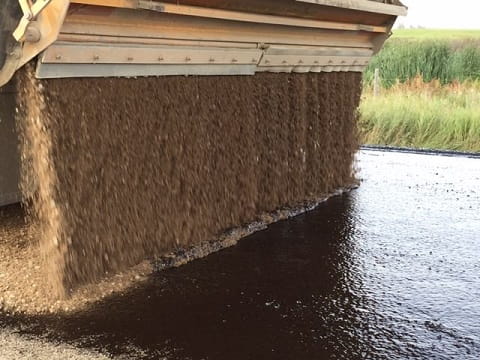Released on July 13, 2017
If you are driving through a 60 km/hr construction zone with fresh oil or gravel on the road, but no workers are present, you are likely passing through a seal coat project. Seal coats are a cost-effective highway treatment that provides a waterproof surface, prolonging pavement life.
“Last year we heard from the public that some work zones were too long, leading to driver frustration,” Highways and Infrastructure Minister David Marit said. “We listened to feedback, and worked with the roadbuilding industry to shorten the work zone for seal coats that, in some cases, were 40 kilometres or longer down to a maximum of 15 kilometres.”
During the seal coating process, hot liquid asphalt is sprayed on the road; crushed gravel is then spread over the asphalt and packed down. The seal coat needs about 24 hours to cure. During this time, reduced speed limits remain in effect while workers may not be present. The loose gravel is swept off after curing, and may require several sweepings.

Seal coat treatments currently underway include a 13 km project on Highway 51 near Kelfield and an 8 km project on Highway 3, west of Melfort.
There may be cases in other work zones when workers are not present that require you to slow down. A sharp pavement drop or loose stones are examples of hazards that warrant a slower posted speed.
With construction season in full swing, people should plan ahead by checking the Highway Hotline at www.saskatchewan.ca/highwayhotline. The weekly construction update is published on www.saskatchewan.ca/residents/transportation/highway-construction-projects/weekly-highway-construction-update throughout the spring and summer months to provide the travelling public with the latest construction information.
The Government of Saskatchewan has invested $7.4 billion in transportation infrastructure since 2008, improving more than 12,000 km of Saskatchewan highways.
-30-
For more information, contact:
Steve Shaheen
Highways and Infrastructure
Regina
Phone: 306-527-8470
Email: steve.shaheen@gov.sk.ca

